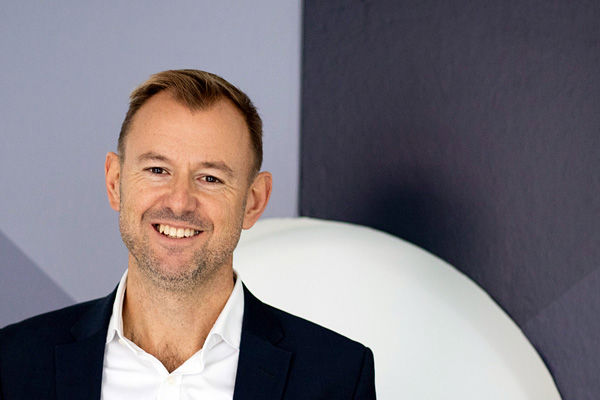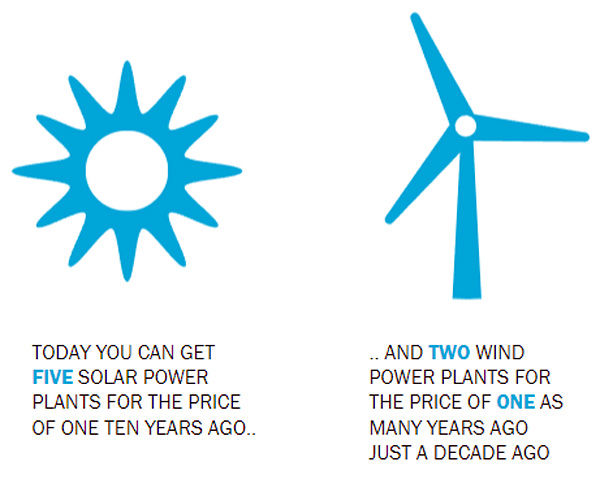Smøla was Europe's largest onshore wind power farm when all 68 turbines were put into operation by Statkraft in 2005, and the wind farm was Norway's largest until 2017.
What if someone told you that they have the solution to one of the world’s biggest challenges?
And that the solution is not something that has been discovered in the past few years, but has been around for well over a hundred years?
The sun is the fastest growing energy source in the world. If development continues, up to 30 percent of the world's electricity needs could be covered by solar energy by 2040.
Or that the solution is constantly being developed and is being used by more and more countries around the world?
The renewable solution to climate challenges
It is, of course, about hydropower, wind power and solar power.
But did you know that the renewable solution to the world's climate crises is not just possible, but also profitable - and not only logical, but efficient and cheap?
With power from the sun, wind, water and other renewable sources, the world can be supplied with electricity at the same time as the challenges relating to climate change can be resolved.
“It’s actually as simple as that,” says Lotte Løland Nordal, Senior Advisor at Statkraft, Europe’s largest producer of renewable energy.
“In other words, we have a lot to do!”

Two parallel crises
Before we can talk about the solution, we must look at the problem. Climate change is to date the largest global challenge we have ever faced. Climate change is the global and local consequence of the fact that the Earth’s average temperature is rising.
This rise in temperature results in more extreme weather events, less stable access to water, violent and more frequent forest fires and increasing melting of glaciers – to mention just a few of its consequences.
Changes in the climate also result in a loss of biodiversity. The experts call it a parallel natural disaster, in which animal and plant species disappear.
Norway is ahead
It makes sense that Norway should lead the way in supplying the world with more renewable energy, Lotte Løland Nordal points out.
“What is exciting about Norway is that we are far ahead of many other countries with regard to renewable energy. That is largely thanks to our hydropower. As much as 98 per cent of the electricity generated in Norway comes from renewable sources. This gives us more room to focus on electrification, thereby reducing carbon emissions.”
Norway’s push to encourage the widespread use of electric cars is a good example. The same can be said of the investments currently being made to introduce electric ferries and develop better batteries – also a Norwegian industry.
Underpinning it all is a century and a quarter of renewable energy production, which makes such investments entirely logical.
“What is exciting about Norway is that we are far ahead of many other countries with regard to renewable energy. That is largely thanks to our hydropower. As much as 98 per cent of the electricity generated in Norway comes from renewable sources."
Replacing fossil energy sources
However, the majority of countries do not have access to as much renewable energy as Norway.
“Norway leads the way as a producer of renewable energy, with almost 100 per cent of its electricity coming from renewable sources. This means that we can also lead the way when it comes to making the production of goods and services emission-free,” says Jon Evang, energy subject responsible at the Norwegian environmental foundation ZERO.

The Environmental Foundation considers that it has only one 'client', and that is the climate issue. ZERO's stated goal is to drive zero-emission solutions at the expense of solutions that produce emissions.
“Replacing fossil fuels with renewable energy is the only way to avoid harmful global warming. And if we don’t solve the climate crisis, the crisis in the natural world will simply intensify,” says Evang.
“Renewable energy is the engine that drives the ‘green shift’. We must build enough renewable energy infrastructure in a sensible way that takes account of the environment and biodiversity, and replaces fossil fuels with energy from renewable sources.”
Renewable is cheaper
The good news is that advances are being made at breakneck speed. Which causes prices to fall. Cheap and fully comparable alternatives can replace fossil fuels. In some places, this is happening already.
“In many countries, solar and wind power is already competitive with existing coal-fired electricity generation. This is a crucial milestone in the greenshift, providing grounds for optimism in the fight against climate change,” says Evang.
The fact that solar and wind power have become more efficient, cheaper and more widely available means that growth countries like China and India are actually shutting coal mines in favour of renewable alternatives. Renewable energy is now a real alternative for countries that had previously been planning additional coal-fired power plants.
“They choose the cheapest option. So growth in the renewables sector offers hope that we can reach our climate goals,” says Jon.
“We don’t have to producer more fossil-fuelled energy to meet the world’s energy needs. We can do so with various types of renewable energy, both on a large scale and on a small scale.”

No longer idealism
Both ZERO's Jon Evang and Statkraft's Lotte Løland Nordal are optimists when it comes to the future.
“We don’t need to produce more fossil-based energy to meet the world’s energy needs. We can do so with renewable energy,” says Evang.
“Renewable energy is the way to go, and we see that more and more people are realising that fact. Renewable power production is expanding year by year, and its cost-effectiveness is rising,” says Nordal.
And that is an important point: Choosing renewable is certainly not a matter of idealism. It is good business. It is profitable.
“And it’s renewable – again and again and again,” she adds.

About Statkraft and sustainability
Statkraft provides renewable energy to businesses, communities and homes around the world. The company invests exclusively in renewable energy and behaves in a sustainable and responsible manner.